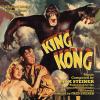|
MONSTER POSTERS GALLERY #07 |
Updated: October 10, 2025
























Movie posters began in the 1890s as lithographic art promoting early films and evolved through the 20th century from hand-drawn illustrations to photographic and digital designs, reflecting both artistic trends and film industry shifts.
Movie posters have their roots in the 1870s with Parisian lithographer Jules Cheret, who pioneered brightly colored lithographic posters. The first known movie poster designed specifically to promote an individual film was created in 1895 for the French short film L'Arroseur Arrose, illustrated by Marcellin Auzolle. This was groundbreaking as it depicted an actual scene from the film rather than simply promoting the novelty of moving pictures
Early posters were primarily used to attract audiences to the novelty of films, which were often short and documentary like in nature. Early 20th Century: Star Power and Theatrical Influence As movies grew in popularity, so did the use of posters to promote them. Initially, actors names were not used, but by the 1910s, studios began featuring stars to boost ticket sales, marking the rise of the star system. Prominent actors like Charlie Chaplin became regular subjects of posters, helping build their iconic images. Posters at this time were often hand-painted illustrations showing dramatic or memorable moments, actors portraits, or both
dailyhistory.org
Artistic Evolution Through the Decades:
1920s to 1930s: Silent film posters flourished as art forms, with detailed hand-drawn illustrations. The 1930s introduced Art Deco influences with bold typography and simplified backgrounds, largely focusing on main actors
1940s: World War II influenced patriotic themes, with studios cutting budgets but still emphasizing actors prominently. Posters moved away from scene depictions to focus more on character portraits
1950s to 1960s: The rise of television aesthetics led to more conceptual and minimalist designs; photography began to replace illustrations in the 1960s. Posters highlighted teen idols, action stars, and more adult themes in response to changing social norms
1970s to 1980s: Photographic posters became dominant, especially after blockbusters like Star Wars. The 1980s saw posters balancing photography with stylistic typography, including adaptations for the emerging video rental market
1990s to 2000s: Digital effects and photo manipulation transformed poster design into vibrant, fantastical images. Minimalism influenced poster layouts, and star names and slogans became secondary to striking visual imagery
The Role of Digital Media and the Future of Posters:
The internet and digital marketing have challenged traditional paper movie posters, reducing their use in favor of online trailers, social media, and dynamic digital displays that provide richer content and global reach. However, movie posters remain important cultural artifacts and collectibles, embodying the artistic and promotional spirit of their films and eras.
Cultural Impact and Collectability:
Movie posters have become iconic symbols of films themselves and are highly valued by collectors, especially vintage or artistically significant works. Studios once relied on distributors like the National Screen Service in the US to print and circulate posters, many of which now fetch high prices at auctions. This cultural reverence reflects the formative role of posters in creating star personas and film legacies.
Summary:
Movie posters have evolved from simple advertising tools to complex works of art nurtured by graphical innovation and the evolving film industry. From lithographic prints in 19th-century Paris to glossy digital images today, posters have both mirrored and influenced movie promotion trends, star culture, and audience engagement. This rich history underscores movie posters as more than mere advertisements they serve as visual time capsules and cultural icons within the cinematic world.
|
 HOME
HOME
 About
About
 EMail Me
EMail Me TOP |
TOP |  PREVIOUS ITEM | NEXT ITEM
PREVIOUS ITEM | NEXT ITEM  ( 18 of 19 )
( 18 of 19 )
























